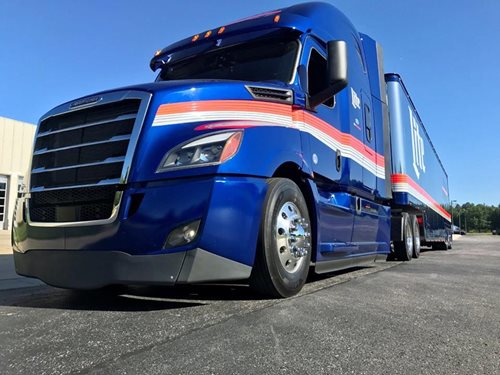
With World Safety Day having taken place on April 28, companies that move products by trucks are closely examining their fleet safety strategy. Safety is taking a more prevalent place in the transportation industry than ever before, and for good reason. Technology is providing new and more comprehensive ways to keep vehicles and people safer. Federal and state governments are implementing safer practices. Businesses want to avoid the risk and high costs that unsafe transportation practices create.
But most importantly, the industry is in the process of trying to reverse some alarming trends. Although the number of injury crashes involving large trucks or buses decreased steadily from 95,000 in 2004 to 60,000 in 2009 (a decline of 37 percent), this decline was followed by an increase of 55 percent from 2009 to 2014, according to the Federal Motor Carrier Safety Administration (FMCSA). The FMCSA also noted that from 2013 to 2014, the number of large trucks involved in injury crashes increased by 21 percent, from 73,000 to 88,000.
There were 10.7 fatal large truck crashes per million people in the United States in 2014, a one percent increase from 2010, the FMCSA says, noting that on average, there were 1.14 fatalities in fatal crashes involving large trucks. “Collision with vehicle in transport” was recorded as the most harmful event for 73 percent of the large trucks involved in fatal crashes.
Also Read: Increasing Safety Through Truck Driver Training
Also during 2014, the number of large trucks involved in property damage only crashes increased by 31 percent, from 265,000 to 346,000. The average cost per incident was about $73,000, according to the National Safety Council. In 2015, the number of crashes involving large trucks increased to 143,832 from 140,092 in 2014, according to the FMCSA. The number of fatalities in these crashes also increased to 4,358 from 4,234 in 2014, while the number of injury crashes also increased to 72,119 in 2015 from 71,580 in 2014.
The cost of an accident, whether commercial or noncommercial vehicles are involved, in which mortality occurs ranges from $300,000 to nearly $10 million, according to the Council. Accidents resulting in injuries and/or disability range from nearly $139,000 to more than $1 million.
It’s very likely that many of these accidents – along with their accompanying costs of time and money – are avoidable. Proper planning, vehicle equipment, regular safety compliance assessments, and comprehensive training for drivers are the keys to having a safer operation.
The benefits of having a safer operation can go beyond accident avoidance. Companies that insure fleets now more than ever want proof that they employ every safety precaution possible. This affects both a company’s access to insurance and the rates it pays.
Create a safety plan that is specific to your business
It’s essential for employers to have a plan that protects employees from hazards connected to their workplace and the performance of their duties. It’s especially important in a commercial transportation environment to have these policies and make sure they are followed. Being compliant and checking frequently for staff and vehicle compliance can mean the difference between life and death for employees and those they can potentially impact during working hours.
To be effective, the plan you create must be specific to your individual business and needs. It requires the support of top management, and employees must receive training on the plan. They should also be tested frequently for adherence to its requirements.